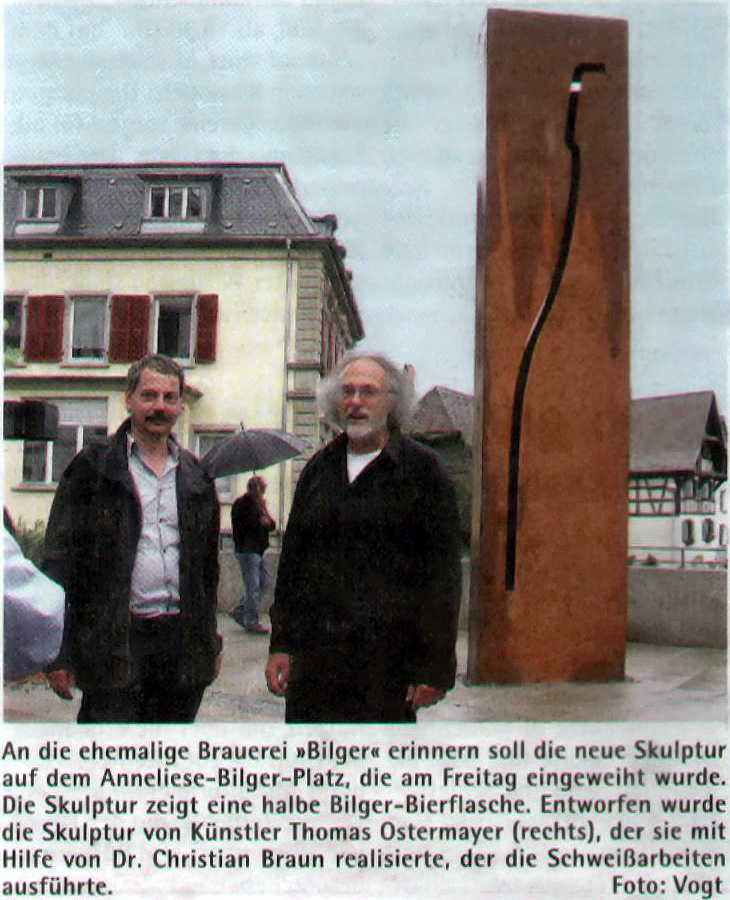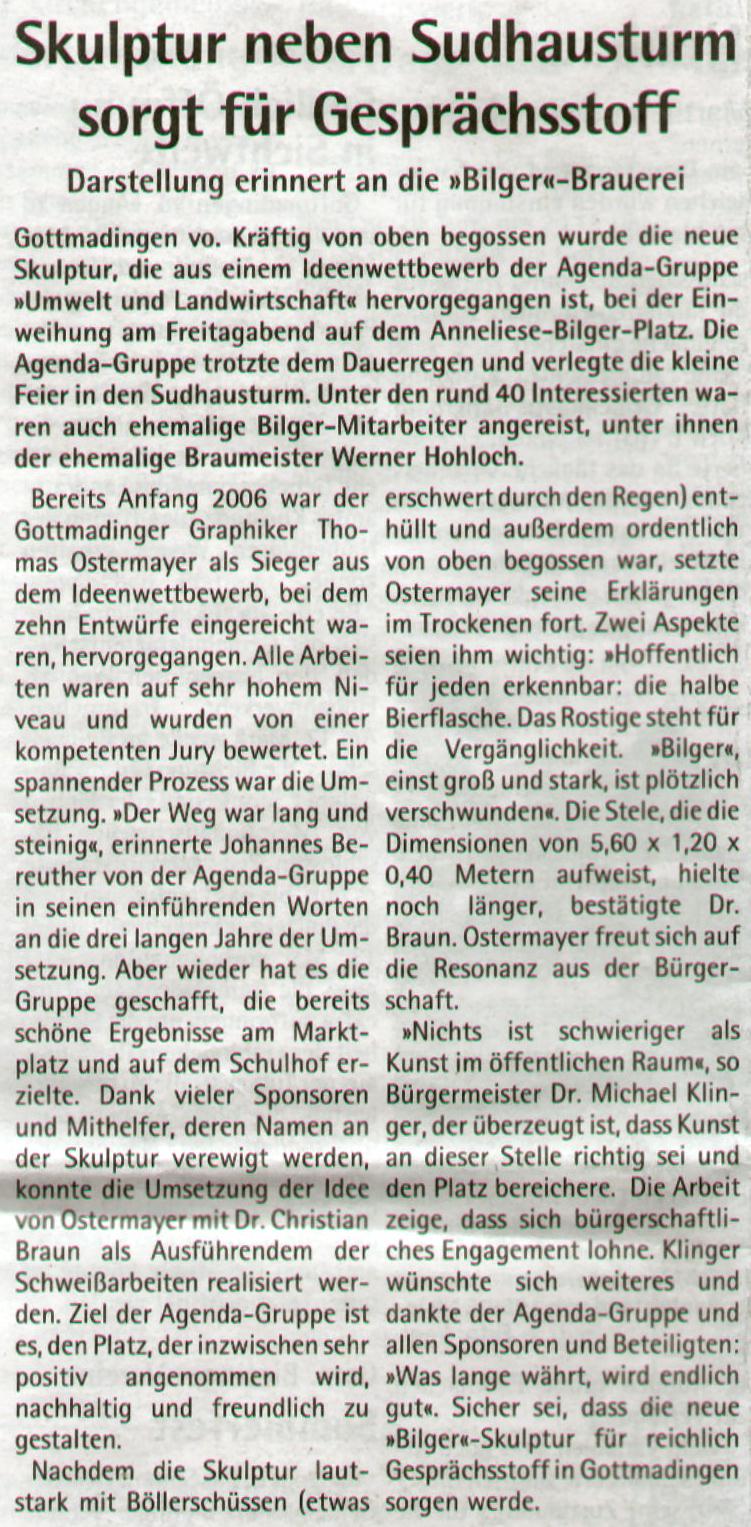Works of Art in Steel
With the joint order of the city of Gottmadingen and the "agenda-group for city-improvements", the following concepts and
technologies were realized:
Aim:
Historically the city of Gottmadingen was famous, even outside the county of "Baden" (southwestern part of Germany),
for the outstanding quality of beer from the brewery "Bilger", which was delivered in the traditional bottles with resealable
swing-top capsules. The Bilger-brewery was in close contact with the oldest brewery of the world in Weihenstephan (south-eastern part
of Germany, close to Munich), who sent their apprentices every summer to Gottmadingen, because the Bilger-brewery was working with
state-of-the-art equipment. However, in 1976 the Bilger-brewery was taken over by the Fürstenberg-brewery and all brewing activities
ceased in Gottmadingen. 30 years later, an independent group of citizens decided to put up a monument of art to remind visitors of
the glorious history of brewing in Gottmadingen. For several years money was collected, and finally an international competition was
lanced for the best work of art, which was finally selected by a jury of professional members of the art-scene. They finally voted
for the concept of a sculpture of corroding steel, decaying like the great brewing tradition, with the inside-contour of a bottle
with a swing-top cap.
Solution:
In cooperation with the artist we developed the outline-contour of the old bottle as a
computer-data-set and scaled it to the total size of a height of 5,60 m; this contour was mirrored and flame-cut to both sides of
the sculpture. In order that the slit of the contour does not begin abruptly, there is a machined groove at the bottom side, that is
slowly going deeper, and is supposed to remind of the slow development of the Bilger brewery. This groove was machined by one of
our large milling machines, and thus we had the complete sculpture on the machine for machining.


Aim:
The artist introduced important details, which were decisive in changing a welded structure into a work-of-art.
Solution:
The weld-seams are concave, they are bent to the outside, and they are hand-polished, so that even in detail the
object conveys the impression of a mono-block, and not the impression of single parts welded together. On the back side there is
a cover for a service-opening. This cover is fitted so tightly by machining all edges, that it is hard to observe. The rigidity
of the object against wind pressure was increased by welding internal reinforcements: the welders had to climb inside and to even
weld within the sculpture. The weld seams had to be stable and to fully adhere to the walls, but at the same time there had to be
no sign on the outside of any heat treatment. The solid connection to the foundations had to be made during the lifting into place
by a mobile crane, but still had to be invisible. The outside had to be evenly corroded, so we treated the outside prior to
corrosion to ensure an optically prefect surface.
Summarizing, the manufacture of the sculpture was a successful combination of traditional craftsmanship with modern technologies
and large machine tools. And finally the sculpture was still in the budget, so that the "agenda-group" can continue to improve
the city with further projects!